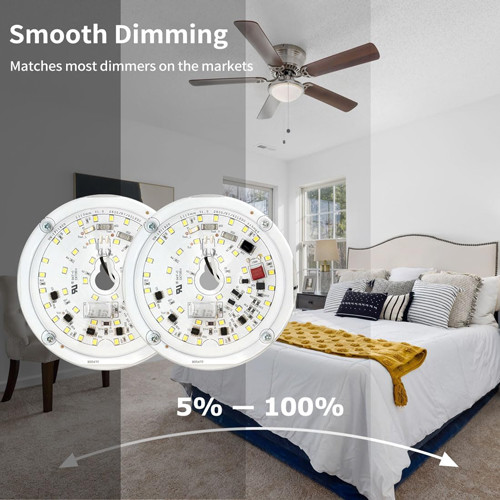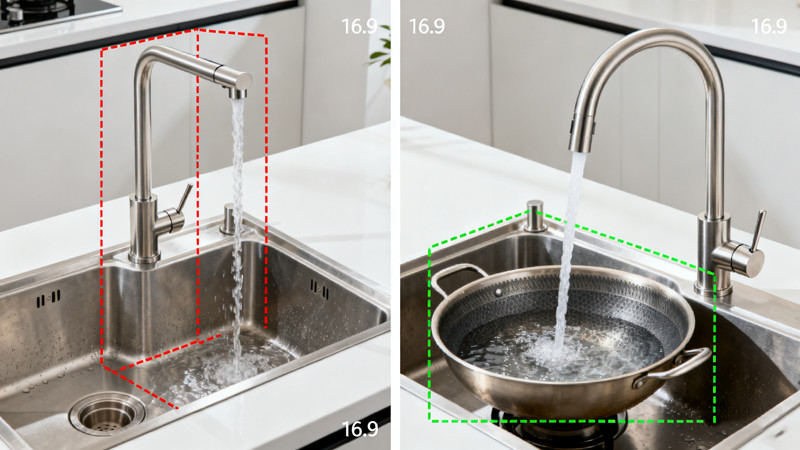
In recent years, integrated LED lights have become increasingly popular in various lighting applications, from residential to commercial settings. These lights offer several benefits over traditional lighting options like incandescent or fluorescent bulbs. However, as with any technology, integrated LED lights come with their own set of advantages and disadvantages. Understanding the pros and cons of integrated led lights can help consumers make informed decisions when choosing lighting solutions for their homes or businesses.
Pros And Cons Of Integrated LED Lights
Pros:
- Energy Efficiency: Integrated LED lights are renowned for their exceptional energy efficiency. Compared to traditional lighting options, such as incandescent bulbs, LEDs consume significantly less energy to produce the same amount of light. This translates to lower electricity bills and reduced energy consumption, making integrated LED lights an environmentally friendly choice.
- Longevity: One of the most significant advantages of integrated LED lights is their longevity. LED bulbs have an impressively long lifespan, often lasting tens of thousands of hours before needing replacement. This extended lifespan not only reduces the frequency of bulb replacements but also lowers maintenance costs, making integrated LED lights a cost-effective lighting solution in the long run.
- Durability: Integrated LED lights are highly durable and resistant to shock, vibration, and external impacts. Unlike traditional bulbs, which are fragile and prone to breakage, LED lights are solid-state devices that can withstand rough handling and harsh environmental conditions. This durability makes them suitable for use in various settings, including outdoor and industrial environments.
- Instantaneous Illumination: Integrated LED lights provide instantaneous illumination without any warm-up time. Unlike fluorescent lights, which may flicker or take a few moments to reach full brightness, LED lights switch on instantly, offering immediate illumination when needed. This feature is particularly beneficial in applications where quick and reliable lighting is essential, such as security lighting or emergency exit signs.
- Design Flexibility: LED technology allows for greater design flexibility, enabling the creation of sleek, compact lighting fixtures with innovative shapes and configurations. Integrated LED lights come in a wide range of form factors, including recessed, surface-mounted, and pendant fixtures, allowing designers to customize lighting solutions to suit specific aesthetic preferences and spatial requirements.
- Dimmability: Many integrated LED lights are compatible with dimmer switches, allowing users to adjust the brightness levels according to their preferences and lighting needs. This dimming capability not only enhances ambiance and mood but also contributes to further energy savings by reducing power consumption when full brightness is not required.
Cons:
- Initial Cost: While integrated LED lights offer significant long-term savings in terms of energy efficiency and durability, they often come with a higher initial cost compared to traditional lighting options. The upfront investment required to purchase LED fixtures and bulbs may deter some consumers, especially those operating on a tight budget. However, it’s essential to consider the total cost of ownership, including energy savings and maintenance expenses, to fully assess the economic viability of integrated LED lights.
- Compatibility Issues: Compatibility can be a concern when retrofitting existing fixtures with integrated LED lights or when integrating LED lighting systems with existing electrical infrastructure or controls. In some cases, additional adapters or modifications may be required to ensure seamless integration, which could add complexity and cost to the installation process.
- Heat Management: While LED lights are more energy-efficient than traditional bulbs, they still generate some heat during operation. Proper heat management is essential to ensure the longevity and performance of integrated LED lights. In enclosed fixtures or spaces with poor ventilation, excessive heat buildup can degrade LED performance and reduce lifespan. Therefore, it’s crucial to select fixtures with adequate heat dissipation mechanisms and proper ventilation to maintain optimal performance.
- Color Quality: While advancements in LED technology have significantly improved color rendering and consistency, some integrated LED lights may still exhibit variations in color temperature or quality. Lower-quality LED products may produce unnatural or inconsistent light colors, leading to poor visual comfort and reduced ambiance. When selecting integrated LED lights, it’s essential to choose reputable brands known for their consistent color performance and high color rendering index (CRI).
- Limited Dimming Range: Although many integrated LED lights are dimmable, some may have limited dimming ranges or compatibility issues with certain dimmer switches. In some cases, dimming LED lights below a certain threshold may result in flickering, buzzing, or color shifting, detracting from the overall lighting experience. To avoid these issues, it’s important to select LED fixtures and dimmer switches that are explicitly designed for compatibility and smooth dimming performance.
- Potential for Obsolescence: As LED technology continues to evolve rapidly, there is a risk of integrated LED lights becoming obsolete or outdated over time. Newer generations of LED products may offer enhanced features, improved efficiency, and better performance, making older models less desirable or compatible with emerging technologies. However, this risk can be mitigated by choosing reputable brands and staying informed about the latest advancements in LED lighting technology.
In conclusion, integrated LED lights offer a plethora of benefits, including energy efficiency, longevity, durability, instantaneous illumination, design flexibility, and dimmability. However, it’s essential to consider the potential drawbacks, such as the initial cost, compatibility issues, heat management requirements, color quality concerns, limited dimming range, and the risk of obsolescence. By weighing these pros and cons carefully, consumers can make informed decisions when selecting integrated LED lighting solutions for their homes or businesses, ultimately maximizing energy savings, performance, and overall satisfaction.
 WOWOW Faucets
WOWOW Faucets





